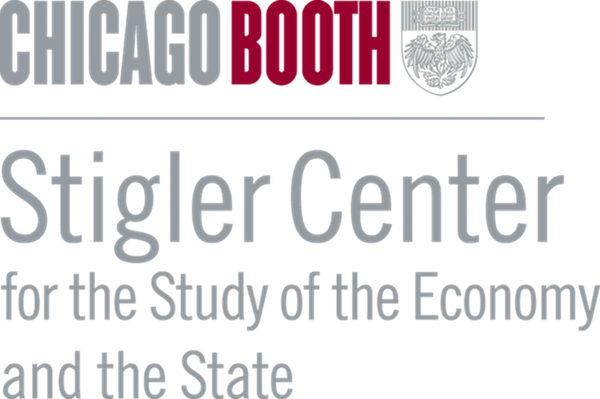Thomas A. Lambert argues that the conservative antitrust program articulated by the antitrust enforcers of the Second Trump administration hardly resembles the conservative antitrust of previous decades. Its divergences will likely end up harming consumers.
This article is part of a symposium that explores the meaning and future of a conservative antitrust based on the writings and policies of the antitrust enforcers in the second Trump administration. You can read the contributions from Rebecca Haw Allensworth, Thomas Lambert, Gus Hurwitz, Christopher Sagers, and Aviv Nevo as they are published here.
Conservative antitrust is back. At least, that’s what the new antitrust enforcers in the second Trump administration are telling us. But today’s conservative antitrust is a far cry from yesterday’s. It embodies “new right” thinking that is much less skeptical of government intervention than conservative—and mainstream—antitrust has been for the last 45 years.
The central claim of this article is that today’s “conservative” antitrust, while right-wing, is not truly conservative. Moreover, as a policy matter, this new breed of purportedly conservative antitrust—“new right” antitrust, as we’ll call it—is likely to be less effective than traditional conservative (“old right”) antitrust at promoting consumer welfare.
To explain why, this article first describes the genesis, development, and influence of old right antitrust and the recent Neo-Brandeisian response from the progressive left. It then summarizes the central features of new right antitrust as described by leading Trump II antitrust enforcers. Finally, it explains why new right antitrust is not really conservative and is likely to be less effective than the prior conservative, and eventually mainstream, approach.
The rise and influence of traditional conservative antitrust
Old right antitrust arose in response to improvident antitrust rulings in the mid-20th century. The federal antitrust statutes’ notoriously vague commands resulted in the creation of what is effectively a federal common law of antitrust based on precedents that evolve with advances in economic learning. In the mid-1900s, courts adopted a number of per se or nearly per se rules forbidding certain business practices that, economists showed, are often welfare-enhancing (for example, here, here, here, and here). In addition, courts began weighing political and social concerns against consumer welfare in deciding antitrust cases. This led to so much indeterminacy—and consequent judicial deference to enforcement authorities—that a Supreme Court justice declared, “The sole consistency that I can find is that, in [antitrust merger challenges], the Government always wins.”
In light of this unfortunate situation, scholars associated with the University of Chicago published a number of articles and books highlighting the inefficiency of certain judge-made antitrust rules. They also urged courts to eschew political and social concerns in deciding antitrust cases and to focus exclusively on one consideration: consumer welfare. The Supreme Court embraced this “Chicago School” approach in the late 1970s, when it decided one case replacing a rule of per se illegality with an approach focused on “demonstrable economic effect”; another reiterating that the antitrust laws were enacted for “the protection of competition, not competitors”; and a third describing the Sherman Act as a “consumer welfare prescription.”
Later Chicago School scholars observed that because antitrust addresses “mixed bag” business practices that can sometimes enhance and sometimes reduce market output and social welfare, it is an inherently limited body of law. Antitrust adjudication involves the risk of welfare-reducing mistakes (either wrongly condemning efficient behavior or wrongly acquitting market power-causing conduct) and requires complex, and thus costly, decision-making. Moreover, those three downsides—false conviction error costs, false acquittal error costs, and decision costs—are intertwined. If a court tries to minimize false conviction error costs by adopting a stricter liability standard or allowing broader defenses, it will raise false acquittal error costs. Attempting to avoid false acquittals will, by the reverse logic, raise the risk of false convictions. And attempting to avoid both sorts of mistakes simultaneously via a more “nuanced” rule raises the decision costs faced by business planners and adjudicators. Driving down one set of costs causes another to rise.
To address this whack-a-mole problem, “Neo-Chicago” antitrust scholars proposed a “decision-theoretic” criterion for antitrust interventions: Enforcers should advocate, and courts adopt, liability rules that “minimize the sum of error and decision costs.” As I have elsewhere shown, the Roberts Court has largely embraced that decision-theoretic framework in deciding antitrust cases, though enforcers have been more reluctant.
The Neo-Brandeisian response
In the mid-2010s, progressive antitrust commentators began attacking the Neo-Chicago approach that had taken root in the courts. Dubbing themselves “Neo-Brandeisians” after early-20th century Supreme Court Justice Louis Brandeis (whose writings emphasized various dangers of big business and industrial concentration), they argued that the prevailing antitrust doctrine’s focus on consumer welfare is short-sighted. Antitrust, they said, should deconcentrate markets to pursue multiple ends, including worker welfare, the protection of small businesses, democratic functioning, wealth equality, economic liberty, localism, and even matters like racial equity. The Neo-Brandeisians also argued for simplifying antitrust with more per se rules and structural presumptions and less emphasis on case-by-case economic analysis. And they pushed enforcers to implement ex ante competition rules to proscribe certain actions rather than rely on ex post standards to assess liability.
In 2020, President Joe Biden tapped Neo-Brandeisians Lina Khan and Jonathan Kanter to head up, respectively, the Federal Trade Commission (FTC) and the Antitrust Division of the United States Department of Justice (DOJ). Under their lead, the agencies implemented some Neo-Brandeisian ideas—for example, focusing more on worker welfare, expanding the definition of “unfair methods of competition” to allow pursuit of multiple goals, emphasizing less “economic” means of defining markets (i.e., the Brown Shoe factors), and promulgating ex ante competition rules. The agencies’ court records were mixed, but most victories turned on traditional, consumer welfare-focused antitrust analysis.
The contours of new right antitrust
President Donald Trump’s 2024 election heralded a move away from Neo-Brandeisian thought at the agencies and a return to “conservative” antitrust policy. But, given Trump’s rejection of much of the classical liberalism that has undergirded American conservatism since the mid-1970s, it was unclear what this new version of antitrust conservatism would entail. Recent addresses by DOJ antitrust chief Gail Slater, FTC Chairman Andrew Ferguson, and Republican FTC Commissioner Mark Meador give a sense of its contours.
While Slater, Ferguson, and Meador spoke independently and addressed different matters, their speeches emphasized common themes. Some of their ideas reflect old right thinking. Others retain aspects of Neo-Brandeisianism. However, taken together and viewed in light of agency practice over the last few months, they suggest that the Trump II antitrust agencies will embrace the sort of “muscular,” results-oriented conservatism favored by new right thinkers like Sohrab Ahmari.
At least three features of the new right antitrust revealed in the enforcers’ speeches resemble old right thinking. The first is a nominal commitment to some version of the consumer welfare standard. On page six of her speech articulating her vision of conservative antitrust, Slater observes that focusing on the welfare of “trading partners” (a term encompassing laborers and input suppliers and what antitrusters usually mean by “consumers”) helps “ensure care and precision in using government power against private monopolies.” On page 21 of his policy outline of conservative antitrust, Meador says the consumer welfare standard—if focused on actual trading partner surplus as opposed to total surplus—will “achieve the political goals of antitrust without requiring judges to make political decisions.”
Second, new right antitrust embraces the old right understanding that government is a major source of anticompetitive trade restraints and socially harmful rent-seeking. As Slater put it, “a system of anticompetitive regulation can be co-opted by monopolies and their lobbyists, such that the state’s power actually amplifies, rather than diminishes, corporate power.” She reported that the DOJ has launched an “Anticompetitive Regulations Task Force” to help “identify and eliminate laws and regulations that undermine the operation of the free market and harm consumers, workers, and businesses.” Ferguson, too, recently wrote that the Commission has taken steps “to identify federal regulations that create anticompetitive barriers to the free American economy.” Specifically, the FTC recommended deletion or modification of more than 125 federal regulations that reduce market competition.
Finally, there is the proverbial dog that didn’t bark: No enforcer has expressed continued support for ex ante competition rulemaking, and the FTC recently withdrew its support for the sweeping non-compete rule promulgated by the Commission during the Biden Administration.
However, several other features of new right antitrust retain aspects of Neo-Brandeisianism. First, despite paying lip service to some version of the consumer welfare standard, Slater and Meador suggest that antitrust enforcement should pursue multiple ends, including the protection of small competitors. On page four, Slater says antitrust should protect not only “America’s forgotten consumers” and “forgotten workers,” but also “the small businesses and innovators, from Little Tech, to manufacturing, to family farms, that were forgotten by our economic policies for too long.” Downplaying consumer concerns, she quotes on page three Treasury Secretary Scott Bessent’s observation that “[a]ccess to cheap goods is not the essence of the American dream.” On page 19, Meador praises two notorious cases—Brown Shoe and Trans-Missouri Freight Ass’n—that suggested that antitrust should sometimes condemn consumer-friendly, price-reducing conduct in order to protect “small dealers and worthy men” and “small, locally owned businesses.” He calls the two cases “conservative through and through.”
Other remnants of Neo-Brandeisianism in new right antitrust include:
- Equating “private tyranny” with government coercion. Given the state’s monopoly on the legitimate use of force, conservatives have traditionally been especially leery of government power. New right thinkers say private firms with market power are equally threatening. Meador contends that “[c]onservatives must reaffirm that concentrated economic power is just as dangerous as concentrated political power.” Slater echoes the view that “just as conservatives fear Tyranny.gov, they should fear Tyranny.com.” Ferguson compares technology platforms’ suppression of certain user-generated content to government censorship and queries: “What’s the difference?” (see 13:45).
- Pushing to simplify antitrust analysis and reduce the influence of economists. Meador asserts that “[t]he right has too often fetishized economic analysis” in antitrust and that, while “[e]conomics may inform the factual and legal analyses of an antitrust question, … it is not a system of thought that can be relied upon to dictate outcomes or set policies.” He advocates “statutorily cabining the use of economic evidence” in antitrust cases. Slater observes that “[i]f a farmer in Indiana or Iowa cannot make sense of our work, the fault lies with us, not with the farmer.”
- Greater emphasis on statutory text and old precedents. Meador chides antitrust courts for “treat[ing] the antitrust laws as a virtually unbound delegation of common-law powers.” He says on page 25 that while the Sherman Act may have implicitly delegated authority to federal courts to craft a federal common law of antitrust, later enacted statutes like the Clayton and Celler-Kefauver Acts are more specific and should be strictly construed. He calls the FTC’s suspension of Robinson-Patman Act enforcement “lawless.” Slater, too, contends that “antitrust agencies should enforce the laws passed by Congress, not the laws they wish Congress had passed.” She further stresses the importance of adhering to precedents “both old and new,” and she observes that “[i]nnovations in economic theory … do not render older precedent a dead letter.”
- Downplaying concerns about false convictions and resulting error costs. Whereas old right antitrust’s decision-theoretic criterion urged enforcers to be careful when going after “mixed bag” practices like deep discounts and exclusive dealing, lest they unwittingly forbid or restrict output-enhancing instances of the behavior at issue, new right antitrust worries little about overenforcement. This is implicit in Slater’s assertion that old right antitrust enforcers “underenforced our century-old antitrust laws for several decades.” Meador makes the point explicitly, asserting that “a conservative approach to antitrust law that seeks to follow congressional guidance will be more concerned with avoiding Type II errors [i.e., false acquittals] than Type I errors [i.e., false convictions],” even though “modern economics may insist that Type I errors are more costly than Type II errors, and therefore to be more carefully avoided.”
Taken together, these remnants of Neo-Brandeisianism increase the discretionary authority of new right antitrust enforcers. Expanding antitrust’s focus to include the concerns of parties other than trading partners gives enforcers cover to bring all sorts of novel actions. Pretending that “private tyranny” is as concerning as governmental coercion creates a narrative of urgency and builds popular support for antitrust interventions. Deemphasizing economic analysis in favor of simpler rules makes it easier for enforcers to win the cases they bring. So does putting greater emphasis on statutory text like Section 7 of the Clayton Act (which forbids mergers where the effect “may be substantially to lessen competition”) and on old, highly interventionist and widely criticized precedents like Brown Shoe (cited more than a dozen times in the Biden enforcers’ merger guidelines, which Ferguson has declined to revisit). Finally, of course, minimizing concerns about erroneously deterring procompetitive arrangements frees enforcers to, in Meador’s words, “move fast and break things up.”
This expanded discretionary authority, then, gives rise to what is likely to be the most distinctive feature of new right antitrust: using antitrust enforcement authority to procure deals that advance conservative causes, even when the law does not require it. Extracting deals by threatening to exercise discretionary authority is a hallmark of Trump’s governing style (see, for example, his use of emergency tariff authority. His appointees have followed suit (for example, the Federal Communications Commission recently approved the Skydance/Paramount merger only if Skydance eliminated diversity, equity, and inclusion programs and subjected news network CBS to monitoring for political bias).
Indeed, the FTC recently approved a merger of two large advertising agencies on the condition that the merged company not direct advertising dollars on the basis of publishers’ viewpoints and accept all advertisers as customers, regardless of their viewpoint. The point of those conditions was to increase advertising revenue for publishers of right-wing content. The FTC thus used its merger authority to secure a conservative objective by “agreement,” even when the First Amendment would have precluded mandating the agreed-upon behavior. Expect more of this from our new right antitrust enforcers.
Assessing new right antitrust
While new right antitrust may secure some conservative objectives—for example, more outlets and funding for right-wing viewpoints, greater restrictions on gender-altering medical interventions—it fails to “conserve” values that people on the right have traditionally cherished. It rejects conservatism’s traditional preference for private ordering over public control, with multiple enforcers equating private refusals-to-deal with government coercion and Meador going so far as to criticize the (heretofore conservative) notion of “permissionless innovation.” By increasing enforcers’ discretionary authority, it reduces predictability for business planners and encourages jawboning to procure behavioral commitments the law does not mandate. It thereby impairs one of conservatism’s most treasured values: the rule of law.
Consider, for example, the FTC’s investigation into Big Tech “censorship” of conservative viewpoints. The FTC almost certainly lacks authority to force technology platforms to carry or promote particular user-generated content, especially in light of the Supreme Court’s decision in Moody v. Netchoice. That case instructed that the First Amendment protects technology platforms’ content moderation decisions. Furthermore, the government cannot survive a First Amendment challenge to restrictions on content moderation by arguing that the restrictions better balance the mix of speech on a platform. Given Ferguson’s concession that the FTC aims to wrest control from “truly terrifying Silicon Valley elites” (see 14:28), who have “truly horrifying and terrifying views” (13:40), a court challenge to platforms’ content moderation choices would likely fail. But the threat of even a meritless FTC action may push technology platforms to alter their content moderation practices in accordance with the FTC’s preference. Ironically, for a self-proclaimed free speech champion like Ferguson (12:30), the FTC’s tactics resemble the very government jawboning that the Supreme Court condemned in National Rifle Association v. Vullo and that Ferguson himself criticized when discussing Murthy v. Missouri.
New right antitrusters, unlike traditional conservatives, are also short-sighted. By expanding enforcers’ discretionary authority and weakening norms against bringing far-fetched actions to extract commitments the law does not mandate, new right antitrusters are forging a double-edged sword. Administrations change, and, especially in light of the apparent demise of Humphrey’s Executor and thus the death of truly independent agencies, the next crop of Democratic antitrust enforcers are sure to aggressively pursue their boss’s progressive agenda. Proponents of new right antitrust, many of whom spent four years bemoaning the politicization of antitrust in the Biden administration, are paving the way for them.
Finally, new right antitrust is likely to be less effective than the older variant at what most everyone agrees is antitrust’s primary, if not exclusive,task: promoting consumer welfare. By minimizing the role of economic analysis, reinvigorating anti-consumer precedents, and downplaying concerns about chilling innovation and efficient business practices, new right antitrust enforcement is likely to leave consumers worse off than a regime harnessing the best economic learning to push antitrust’s common law development toward doctrines that maximize market output by minimizing the sum of error and decision costs.
Author Disclosure: The author reports no conflicts of interest. You can read our disclosure policy here.
Articles represent the opinions of their writers, not necessarily those of the University of Chicago, the Booth School of Business, or its faculty.
Subscribe here for ProMarket’s weekly newsletter, Special Interest, to stay up to date on ProMarket’s coverage of the political economy and other content from the Stigler Center.






